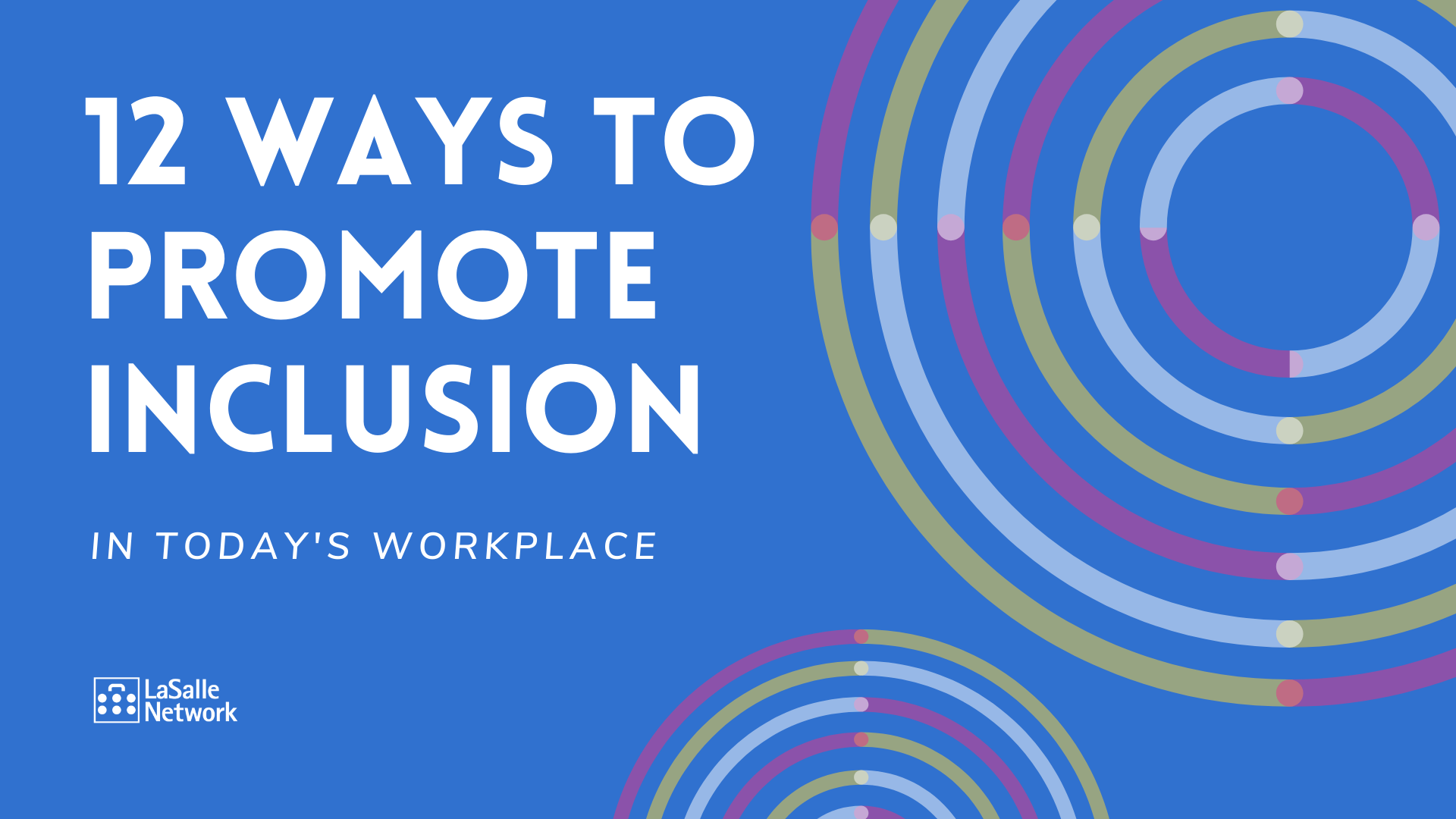In·clu·sion
- The act of including: the state of being included
- To take in or comprise as a part of a whole or group
Inclusion means employees feel seen, are encouraged to speak their mind and accepted as they are. A Harvard Business Review study revealed that 72% of black women, 53% of Latinas, and 52% of Asian women say that “executive presence” at their company is defined as conforming to traditionally white male standards, and they feel they must compromise their authenticity if they want to be leaders at their workplaces. If employees feel the need to change or downplay parts of themselves to be accepted at work, there is not true inclusion and the individual’s talent is not being maximized.
When employees who are different from their colleagues can flourish and share their ideas, the company benefits from increased engagement and creativity, not to mention improved retention.
In this post, we will address several tips for how to be an inclusive leader, how to promote inclusion in your organization and how to achieve inclusivity with a remote workforce.
Inclusive Leadership
Train leaders to strive for inclusion. Sustainable inclusivity starts with leadership and the structures they put in place to protect their employees’ individuality. Train leadership to recognize unconscious bias and support diverse groups within the organization. Create a sustainable model for continuing this training on a regular basis.
Evaluate unconscious bias. Consider having leaders and employees take a test such as Harvard’s Project Implicit test to determine unconscious biases they may have. By uncovering some potential biases and hosting ongoing training to combat them, a workforce can become more cognizant of being inclusive and fair.
Create policies that uphold inclusion. Promote allyship as a core value of the company, in which employees and leadership of diverse backgrounds can consistently advocate for one another and remain accountable in their diversity and inclusion efforts. Create clear communication policies regarding when and how employees should report unfair treatment. This may include a tracking and reporting system that measures progress against goals.
Consider creating a diversity & inclusion committee comprised of employees of varying backgrounds, demographics and levels within the company. This committee can facilitate trainings, organize community events, provide educational material and help leaders promote an environment where employees feel welcome and heard.
Openly communicate about inclusion. For members of a marginalized or underrepresented group, it may be especially difficult to be heard or feel visible within an organization. By taking a stance to promote inclusion as a core value of the company and creating structures and policies to uphold diversity and inclusion efforts, employees may feel more comfortable speaking up. Celebrating the differences employees bring to the table is a key element to creating a truly inclusive environment.
Actively seek out feedback. While many organizations may have streamlined their decision making during the pandemic, it may now be important to readjust to include more people in policy changes and inclusion efforts. Management should make an intentional effort to solicit feedback from employees on different teams and of various levels. Create various ways for individuals to confide in leadership if encountering a problem or report on potential gaps in inclusion efforts. This could include regular employee surveys, one-on-one check ins, or Q&A sessions during a town hall or team meeting.
Inclusive Workforce
Provide educational resources. Amid a social climate of unrest regarding racial inequality, providing resources for employees to educate themselves may be a good way to cultivate a culture of acceptance and understanding. Best practices for providing educational materials include formal training by HR or a third-party vendor, collecting and sharing guides of various books, documentaries and other educational resources, or encouraging smaller team meetings to discuss current events and social tensions.
Provide sensitivity training. Training, either by HR or by a third-party vendor, is a valuable resource to educate employees on potential bias and strategies to promote a more inclusive workplace. By educating each employee to promote inclusivity, it can be adopted into company culture.
Diversify teams. Creating teams that represent a myriad of races, ages, experiences and personality types can encourage individuals to speak up and share their own ideas as well.
Consider organizing a sponsorship or mentorship program. Creating a program for senior leaders to invest in lower level employees within the organization can help to increase their visibility and engagement, while training employees on leadership skills that will benefit the organization in the future. When leaders advocate for an employee, it helps to promote diverse voices and allows employees at various levels to be seen and heard.
Inclusion in a Remote World
Acknowledge everyone in the “room.”
Working remotely has the potential to feel isolating and discourage individuals from speaking up. Make a point to hear from each individual on a call when in smaller meetings. By asking everyone to share their thoughts or beginning a meeting by checking in with how each person is doing, the virtual “ice” is broken, and people feel seen. By beginning with each person sharing, engagement throughout the rest of the meeting tends to increase as well.
In larger meetings, start by acknowledging attendees of all different levels and teams on the call. Take a few short minutes at the very beginning of a discussion to display appreciation for those working together toward a common goal.
Host virtual social events.
Because employees and management may not be physically seeing or interacting with people of varying backgrounds, inclusion has likely not been on the forefront of many people’s minds. By hosting virtual happy hours or socially distanced events, people can see and interact with one another more casually. By strengthening relationships with colleagues, employees may be more likely to feel seen and appreciated.
Promote casual conversations.
While employees are working from home, coworkers have the chance to virtually see into one another’s personal lives. Video calls may get interrupted by children or pets, and often meetings are more casual than before. By blending the line between work and home and encouraging more casual conversations, employees may feel more comfortable to be themselves and feel less pressure to conform to the office norm.
Inclusivity is a key element to allowing employees to feel psychologically safe and supported as a key member of an organization. Psychological safety is pivotal in keeping employees engaged and productive. During times of rapid change and uncertainty, providing a safe space where employees feel seen and heard will be beneficial for your employees, your employer brand and the business as a whole.
View Part I: What is Diversity in the Workplace.
If you’re looking to build a diverse team, let us help you. Get connected here.







